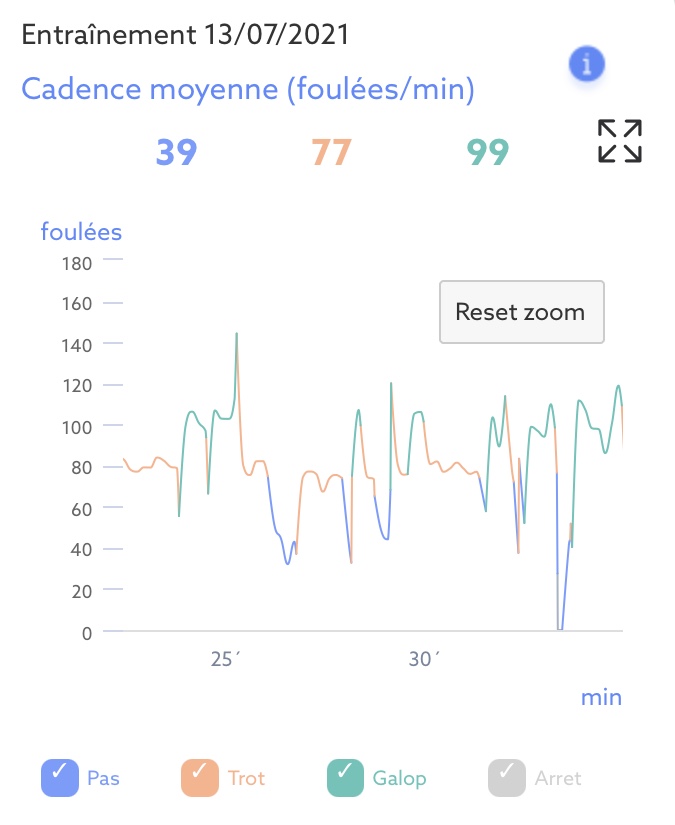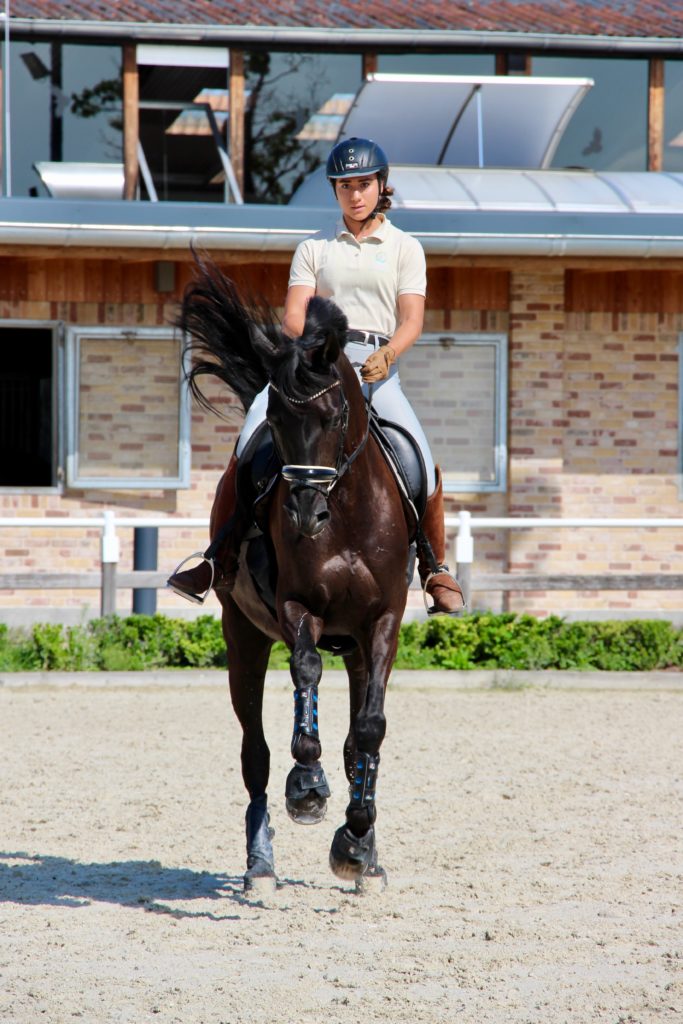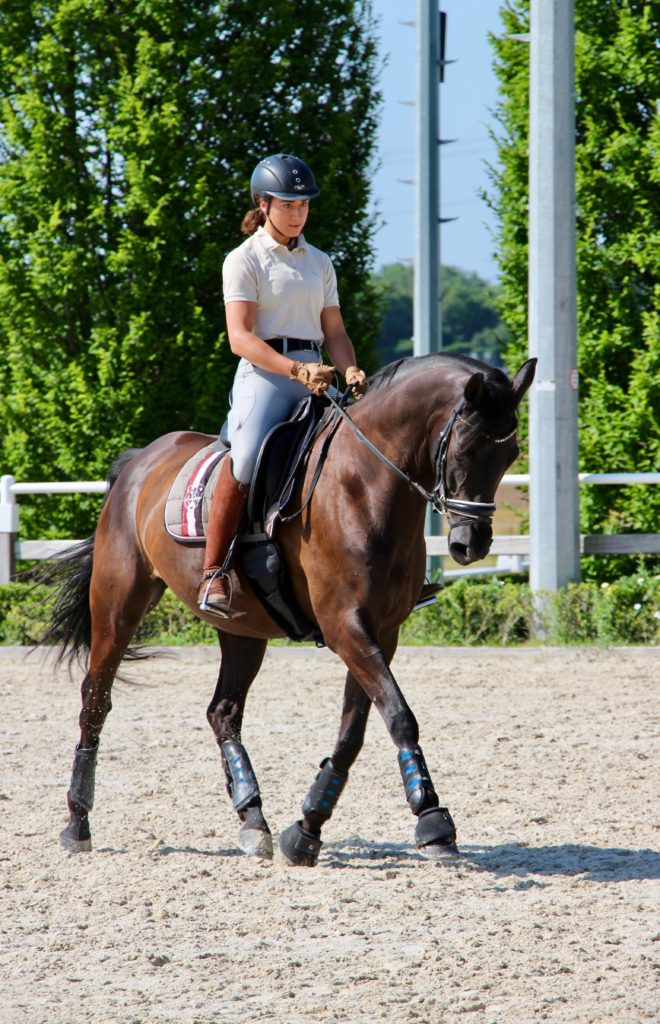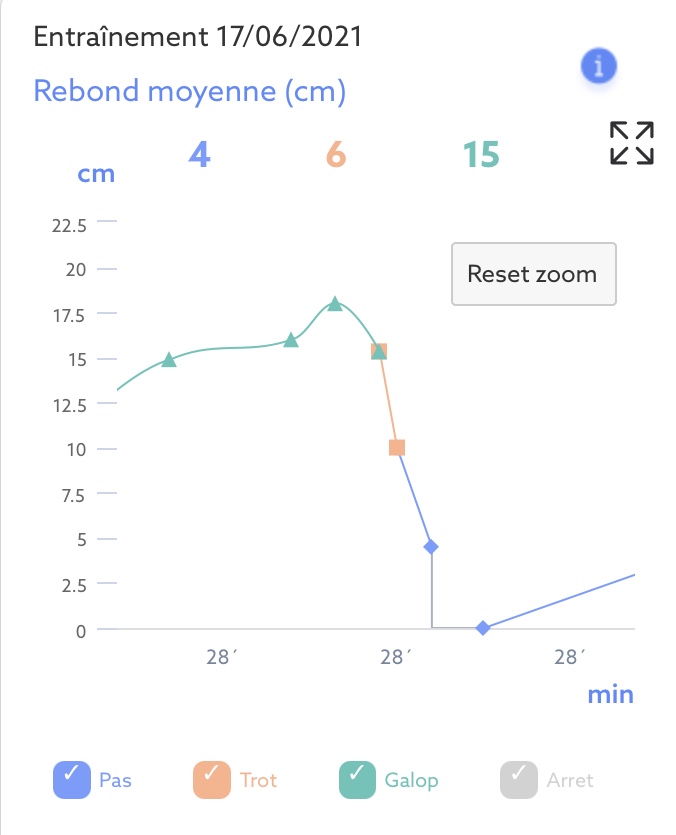Thursday, September 27, 2018
Did you know that your CEEFIT by Seaver measures cadence and bounce of your horse at work ? But what exactly do these terms mean? In this article, we give you the keys to understanding these two features and their relevance to your horse's daily work.

Cadence is the number of strides taken per minuteat a given pace. A stride represents all the movements separating two successive poses of the same limb at a given pace. In a way, it's the horse's rhythm.
Changing cadence therefore means taking more or fewer strides in a given time. A regular cadence allows the horse to balance and bounce in his gaits.. As a result, your horse will be better able to engage and respond to your requests.
To assess your horse's regularity, your CEEFIT gives you theevolution of cadence(i.e. the number of strides per minute) over the course of your session, distinguishing by color the passages at each gait: blue for walk, orange for trot and green for canter.

We note that the horse slightly accelerates his canter before returning to trot, perhaps due to opposition or loss of balance. A phenomenon to watch out for and work on if it occurs systematically.
The average horse takes between 35 and 60 strides per minute at the walk, between 55 and 100 strides per minute at the trot and between 80 and 130 strides per minute at the canter. These are, of course, averages. Some horses may be above or below these ranges. For example, a trotter in full swing can easily exceed 120 trotting strides per minute.

The application also gives you an indication of how this session compares with the last.

In the example above, the regularity of trotting cadence is perfect. However, the horse has taken 5 fewer strides per minute at the canter than at the previous session. It's not much, but it gives us an indication. Theaim of this session was to work on the canter-step, which tells us that the rider tended to slow her horse down rather than move forward. braking her horse rather than gathering him (which is what we're looking for when working on the canter-step). This information points to areas for improvement in future sessions.
Lateral and longitudinal work (lengthening, gathering) can reduce regularity, as can a change of ground outdoors.

When you take a class with your coach, it can be interesting to observe the cadence data obtained for a given pace or exercise. This way, when you work alone at home, the aim will be to find the same values.
Cadence data can also help you to validate lengthening. To do this, you'll need to check that the cadence varies little and doesn't increase during your lengthening, as is often the case with horses or riders at the beginning of their training.
The rebound corresponds to theamplitude of your horse's vertical movement. It enables you to work on the verticality of your gaits: the more bounce your gaits have, the higher your horse will be propelled.
To evaluate your horse's bounce, we give you the evolution of dorso-ventral displacement in centimetres, over the course of your session, distinguishing by color the passages at each gait: blue for walk, orange for trot and green for canter. You'll also find an average for walk, trot and canter.

A horse has an average bounce of between 1 and 5 cm at the walk, between 5 and 15 cm at the trot and between 10 and 25 cm at the canter. Once again, these are averages. Variations in bounce can be observed according to breed, conformation and size.. Some horses may have a rebound below or above these values, but there's no need to worry.

It is worth noting that if a dressage rider dressage rider will seek to increase these values through workother disciplines, such as endurance (to limit fatigue) or western pleasure, require a "razor-sharp" horse with a low bounce.
Comparing the rebound of your different exercises is useful for understanding how to improve it. Don't forget that rebound tend to increase when working on floor bars or cavaletti..

Above, we can see the evolution of the rebound during the passage of a cavaletti followed by a downward transition from bars to floor. We can clearly see the increase in rebound on the cavaletti.
Now it's your turn 😉
The Seaver team